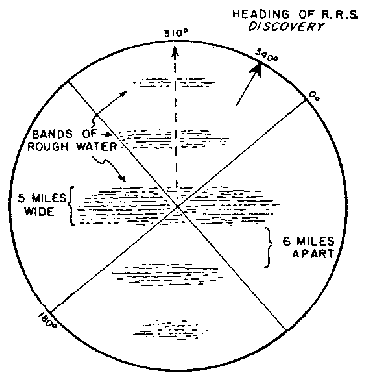 |
Science Frontiers ONLINE No. 56: Mar-Apr 1988 |
|
|
Wave-bands in calm waters and biscay boils
An excerpt from an article in Nature:
"There are numerous reports of internal waves being 'made visible' on the sea surface by their effect on the surface-wave field and the production of bands of steeper, often breaking, waves separated by zones of relatively calm water. The effect is sometimes quite dramatic. There are accounts of a 'low roar' as the bands of breaking waves, 'walls of white water,' pass a vessel. The bands are sometimes visible from aircraft, on ships' radar and are observed from satellites. In the Bay of Biscay 'boils' have been reported on the sea surface in the calm zones, and appear to be related to pulses of nutrients from the thermocline."
These surface phenomena are truly delightful and almost always the consequence of internal waves interacting with the surface. The great bulk of the referenced report is concerned with sonar observations of internal waves and their effects along the coast of Scotland. (Thorpe, S.A., et al; "Internal Waves and Whitecaps," Nature, 330:740, 1987.)
Comment. For some remarkable accounts of wave packets, as well as solitary waves, see category GHW in Earthquakes, Tides, Unidentified Sounds. This book is described here.
 |
On March 28, 1964, in the Indian Ocean, the R.R.S. Discovery encountered five bands of breaking waves in an otherwise nearly calm sea. Wave heights were about 2 feet. There was no wind change when the waves passed. (Category GHW2 in Earthquakes, Tides, etc). |